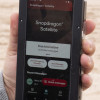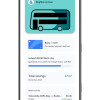State of Emergency
It all seemed so simple, but nothing is ever as simple as it looks. Implementing the first phase - forwarding 911 calls - went relatively smoothly. Except that initially phone manufacturers thought it would be cool to include a separate 911 button on their handsets, which caused numerous unintentional calls overtaxing the 911 call centers.
The real problems began as carriers tried to implement Phase I. The carriers were off to a slow start, and due to bickering and technical glitches, the FCC extended the deadline for Phase I an extra six months, to mid 1998. Most carriers (with the notable exception of VoiceStream, now T-Mobile) were able to meet this new deadline with ease, but it didn't matter much. Most PSAPs weren't ready for Phase I.
Many answering points had equipment that would only let them receive a 7-digit caller ID, because when choosing equipment, the assumption was made that all calls would come from local wireline phones. PSAPs needed to upgrade their caller ID system to accept 10 digits, as well as upgrade their systems to receive Phase I location data (tower location).
Because of the expense of the upgrade, many PSAPs chose to wait until carriers started implementing Phase II, since it used a different location protocol that still was being finalized by equipment manufacturers and carriers.
Even today, only about 75% of PSAPs are Phase I compliant.


 Qualcomm Taps Iridium for Satellite Connectivity
Qualcomm Taps Iridium for Satellite Connectivity
 iPhone 15 Series Goes All-In on USB-C and Dynamic Island
iPhone 15 Series Goes All-In on USB-C and Dynamic Island
 Samsung S24 Series Adds More AI, Updates the Hardware
Samsung S24 Series Adds More AI, Updates the Hardware
 Galaxy Ring Joins Samsung's New Wearable Lineup
Galaxy Ring Joins Samsung's New Wearable Lineup
 Google Bringing Transit Ride History to Google Wallet
Google Bringing Transit Ride History to Google Wallet

